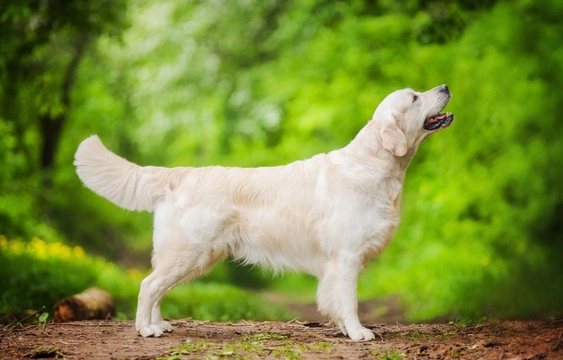
Dog Hairballs: Symptoms, Causes & How to Help
Virtually all animal lovers know that cats can develop hairballs, which are usually coughed back up at some point when they form a matt or ball of hair in the stomach. However, certain types of dogs can develop hairballs as well, particularly if they have certain types of fur that tends to shed a lot, or that grows very long.
Very shorthaired dogs with a fine coat such as the Staffordshire bull terrier do not tend to develop hairballs, because their coat is simply too short to do so, even though these breeds tend to shed regularly throughout the year. However, if you own a dog with very thick, long, or double layered fur, or one that licks their coat a lot, a problem may arise!
In this article, we will share some tips on how to recognise the warning signs in dog types that tend to be prone to them, and some of the steps that you can take to prevent them from developing. Read on to learn more.
How do dogs develop hairballs?
While dogs do not tend to lick and groom themselves and each other as much as cats do, they do still lick their coats and groom their fur regularly, which means that when they lick loose hair, it will be ingested and end up in the stomach. Hair (or fur) is not digested and broken up by the body, and so when it passes back out the other end, it will remain in near to its original format!
However, hair does of course tangle easily, and this hair that your dog licks and ingests can soon tangle in itself, and also, around food particles and anything else your dog has consumed.
This means that it can form matts or balls in the stomach, which may not be passed out through the digestive system because they are too large, or oddly shaped. Over time, more hair will of course be added to the mix, and matts of hair of this type can grow quite large, and ergo be unable to pass from the stomach into the intestines to be passed with faeces.
This means that the hairball remaining will either be coughed or vomited back up, which can happen quite regularly in dogs that are prone to hairballs-but if this is not possible, they can form a blockage that stops up the whole digestive system, and potentially poses a hazard to the dog’s health.
What sort of dogs are most prone to developing hairballs?
Theoretically, any type of dog can potentially develop hairballs, but they are much more likely to become a problem in dogs that have very long, dense or thick hair that sheds.
Dogs that don’t shed very much (like the poodle) are less likely to develop hairballs, but breeds with long or thick fur that sheds heavily, like the German Shepherd, Siberian husky and the Golden retriever are highly likely to develop the odd hairball!
Additionally, dogs that continually lick at their fur or that are obsessed with their grooming will ingest more fur than the next dog, and so may be at risk too. Don’t overlook the potential for a shorthaired dog to groom a companion, and ingest their fur too!
What are the indications of hairballs in dogs?
Coughing up or vomiting up a hairball are the obvious indications that your dog is developing them, but while your dog is able to bring them up without an issue, they are highly unlikely to become a problem, although it is wise to keep an eye on it.
If you see hair tangled in your dog’s stools, this indicates that the hair is passing through your dog’s digestive system, but it can also serve as an indication to keep an eye out in case any problems do develop.
Problem hairballs are those that cannot be passed, of that are not being passed easily; indications of this can include your dog coughing as if they are trying to bring something up without result. Hacking, coughing or vomiting can indicate hairballs too.
If a hairball causes a blockage, your dog’s whole digestive system will stop up, leading to the stomach becoming hard and distended, and the normal sounds of digestion halting entirely. If you spot this happening, speak to your vet immediately as a large blockage can be very dangerous.
Can you prevent dogs from developing hairballs?
It is not always possible to prevent you dog from developing hairballs, but making sure that you groom them regularly and remove shed hair when they are moulting goes a great way towards minimising the amount of hair that your dog ingests.
Additionally, if your dog tends to lick and groom other dogs or they are obsessive about licking themselves, they will be at greater risk of developing hairballs, so keep an eye on this as well.



